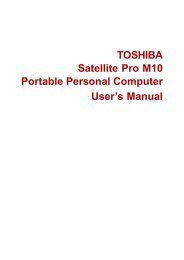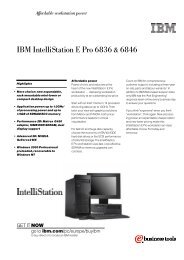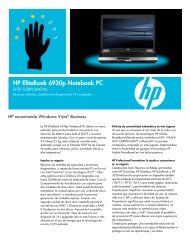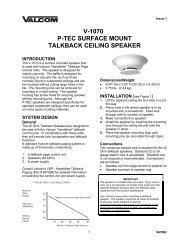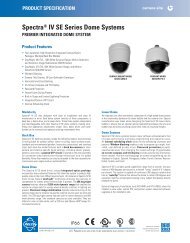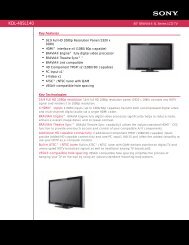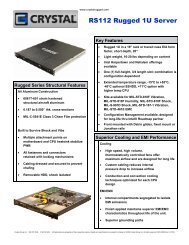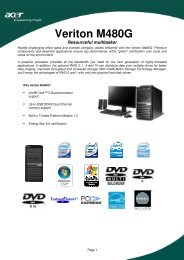HP ProBook 4320s Notebook PC HP ProBook 4321s ... - Warranty Life
HP ProBook 4320s Notebook PC HP ProBook 4321s ... - Warranty Life
HP ProBook 4320s Notebook PC HP ProBook 4321s ... - Warranty Life
Create successful ePaper yourself
Turn your PDF publications into a flip-book with our unique Google optimized e-Paper software.
Grounding guidelinesElectrostatic discharge damageElectronic components are sensitive to electrostatic discharge (ESD). Circuitry design and structuredetermine the degree of sensitivity. Networks built into many integrated circuits provide someprotection, but in many cases, ESD contains enough power to alter device parameters or meltsilicon junctions.A discharge of static electricity from a finger or other conductor can destroy static-sensitive devices ormicrocircuitry. Even if the spark is neither felt nor heard, damage may have occurred.An electronic device exposed to ESD may not be affected at all and can work perfectly throughout anormal cycle. Or the device may function normally for a while, then degrade in the internal layers,reducing its life expectancy.CAUTION: To prevent damage to the computer when you are removing or installing internalcomponents, observe these precautions:Keep components in their electrostatic-safe containers until you are ready to install them.Use nonmagnetic tools.Before touching an electronic component, discharge static electricity by using the guidelinesdescribed in this section.Avoid touching pins, leads, and circuitry. Handle electronic components as little as possible.If you remove a component, place it in an electrostatic-safe container.The following table shows how humidity affects the electrostatic voltage levels generated by differentactivities.CAUTION: A product can be degraded by as little as 700 V.Typical electrostatic voltage levelsRelative humidityEvent 10% 40% 55%Walking across carpet 35,000 V 15,000 V 7,500 VWalking across vinyl floor 12,000 V 5,000 V 3,000 VMotions of bench worker 6,000 V 800 V 400 VRemoving DIPS from plastic tube 2,000 V 700 V 400 VRemoving DIPS from vinyl tray 11,500 V 4,000 V 2,000 VRemoving DIPS from Styrofoam 14,500 V 5,000 V 3,500 VRemoving bubble pack from <strong>PC</strong>B 26,500 V 20,000 V 7,000 VPacking <strong>PC</strong>Bs in foam-lined box 21,000 V 11,000 V 5,000 VPreliminary replacement requirements 47



